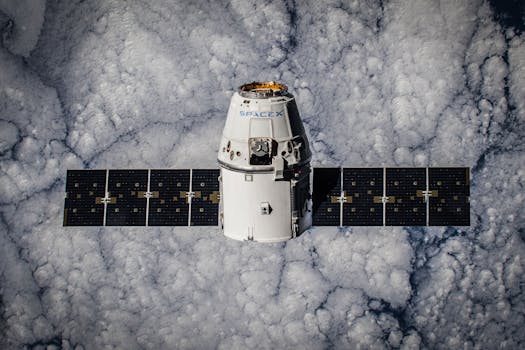The Future of Satellites: Revolutionizing Global Connectivity with WordPress

The Future of Satellites is an exciting and rapidly evolving field, and WordPress is playing a significant role in shaping its future. The future of satellites is poised to revolutionize global connectivity, and with the increasing demand for satellite-based services, it’s essential to understand the current state of satellite technology and its potential applications.
The launch of satellite constellations such as Starlink and OneWeb has marked the beginning of a new era in satellite technology. These constellations are designed to provide global internet coverage, bridging the digital divide and connecting remote communities. WordPress, with its flexibility and customization capabilities, is being used to develop innovative satellite-based solutions, such as satellite-enabled website hosting and content delivery networks.
Current State of Satellite Technology
Satellite technology has come a long way since the launch of the first artificial satellite, Sputnik, in 1957. Today, there are over 5,000 satellites in orbit around the Earth, providing a range of services, including communication, navigation, weather forecasting, and Earth observation. The development of new satellite technologies, such as reusable launch vehicles and advanced propulsion systems, has reduced the cost of access to space, making it more accessible to companies and organizations.
The increasing demand for satellite-based services has led to the development of new business models, such as satellite-as-a-service, which provides customers with access to satellite capacity on a pay-as-you-go basis. This model has enabled companies to launch satellite-based services without the need for significant upfront capital investment. WordPress, with its ease of use and flexibility, is being used to develop custom satellite-based solutions, such as satellite-enabled e-commerce platforms and satellite-based social media networks.
Future Applications of Satellite Technology
The future of satellites holds tremendous promise, with potential applications in fields such as remote sensing, disaster response, and environmental monitoring. Satellite technology can be used to monitor climate change, track natural disasters, and predict weather patterns. The development of advanced satellite sensors and imaging technologies has enabled the collection of high-resolution data, which can be used to support decision-making in fields such as agriculture, urban planning, and emergency response.
WordPress, with its vast ecosystem of plugins and themes, is being used to develop custom satellite-based solutions, such as satellite-enabled emergency response systems and satellite-based environmental monitoring platforms. The use of artificial intelligence and machine learning algorithms in satellite data analysis is also becoming increasingly popular, enabling the extraction of insights from large datasets and improving the accuracy of predictions.
Challenges and Opportunities
Despite the many opportunities presented by satellite technology, there are also challenges that need to be addressed. The increasing number of satellites in orbit has raised concerns about space debris, collision risks, and the environmental impact of satellite launches. The development of sustainable satellite technologies, such as green propulsion systems and biodegradable satellites, is essential to mitigate these risks.
The future of satellites also raises important questions about governance, regulation, and cybersecurity. As the number of satellites in orbit increases, the risk of cyber attacks and data breaches also rises. The development of robust cybersecurity measures, such as encryption and secure communication protocols, is essential to protect satellite-based systems and ensure the integrity of data.


